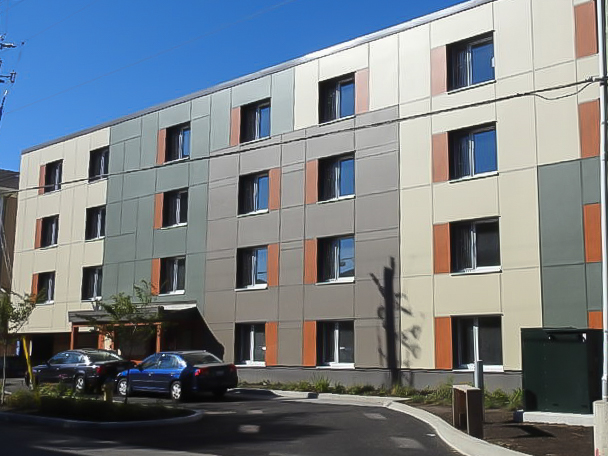
Image Credit: Passive House Canada
Reduced energy demands coupled with a national effort to reduce carbon emissions are making affordable housing projects built to the Passivhaus standard more attractive in Canada.
Karen’s Place, a 42-unit project in Ottawa, became the country’s first Passivhaus apartment building when it was completed last year, according to an article posted by CBC News. A handful of additional projects are now in the planning stage.
The four-story building, also known as Salus Clementine, is home to tenants suffering from severe mental illness, half of whom had no place to live before the project was finished. Although building to the Passivhaus standard is more expensive than building an apartment house that minimally complies with building codes, the $30-a-year heating bills help building managers meet strict rent limits imposed by the provincial government.
Tenants on a disability pension pay $498 per month (including utilities) for the studio apartments, a limit that hasn’t changed in years. The non-profit developer, Ottawa Salus Corporation, found that Passivhaus building helped it save on operating costs.
“Building green is a natural fit for the affordable housing sector, just out of sheer necessity,” Salus Executive Director Lisa Ker told CBC News.
The other factor making the building standard attractive is a Canadian national effort to reduce carbon emissions under terms of the 2015 Paris Accord. While the U.S. has walked away from the pact, Canada has pledged to reduce carbon emissions 30% below 2005 levels, so developers like Indwell, a Christian charity now building two Passivhaus apartment houses, have decided to make carbon reductions a part of the bidding process for new public housing projects.
Passive multifamily projects are still unusual
Karen’s Place was built to meet requirements of the German Passivhaus Institut. The C$9.1 million project is only one of five multifamily buildings in Canada on PHI’s list of certified projects. (Construction details can be found here.) Builders also can seek certification through the Passive House Institute U.S., and while more than 50 multifamily projects are listed on the PHIUS website, only a handful of them are located in Canada. (They include the Rideau Residences, also in Ottawa, certified in 2012.)
But that certainly appears to be changing. After Salus won an innovation award for Karen’s Place last year, other affordable housing developers took their cue. Indwell is planning two 50-unit apartment buildings in Hamilton, Ontario, a port city on the western end of Lake Ontario, for people with disabilities. Indwell has started two other projects in southwestern Ontario.
Graham Cubitt, Indwell’s director of projects and development, told CBC News the two Hamilton projects took a year to design, three or four times as long as a more conventional apartment building would have. Construction costs were about 5% higher. But as designers and builders grow more familiar with Passivhaus requirements, Cubitt said, prices should come down, “so that adopting this won’t be impossible for either the affordable sector or the market sector.”
In Vancouver, developers submitted proposals last fall for two towers of Passive House apartments, 43 and 48 stories tall. If approved by the city and built as planned, they would become the world’s tallest Passive House structures when they open in 2022.
Number of U.S. projects growing
In the U.S., Passive House multifamily buildings include the 57-unit Orchards at Orenco in Hillsboro, Oregon, the 45-unit Bayside Anchor in Portland, Maine, and the 48-unit Brewer Passive House in Brewer, Maine. A huge Passive House project in Kansas City called Second and Delaware was to have included 276 housing units, but the $62 million project has been stalled by legal problems, according to an article posted at The Kansas City Star. It’s not clear how that will be sorted out.
“The affordable sector has driven great growth here in the United States for the past few years,” Michael Knezovich, chairman of the PHIUS Industry Advisory Council, said in an email. “PHIUS was on the front end of that, and in fact, helped get passive building on the map for financing purposes.”
Knezovich said Pennsylvania was the first state in the country to give Passive House projects extra points when awarding money to developers. “Other entities have followed suit,” he added. “And Enterprise Green Communities, from which many state housing financing agencies take their cues, similarly instituted recognition of Passive projects.”
More than a third of the 50-plus multifamily projects listed as “certified” or “pre-certified” in the PHIUS data directory of projects are located in Pennsylvania.
With help from the MacArthur Foundation, PHIUS developed a guide for designers, architects, and builders who are tackling affordable or market-rate multifamily projects.
PHIUS says it has certified 19 multifamily projects to date with another 32 “pre-certified,” or in development. There are 60 other projects that have been submitted for review and are in the design phase. The certified projects include a total of 286 units of housing covering 249,901 square feet. Pre-certified projects include 900 units for a total of 774,032 square feet.
This post was updated on Jan. 3 with new information from PHIUS.
Weekly Newsletter
Get building science and energy efficiency advice, plus special offers, in your inbox.





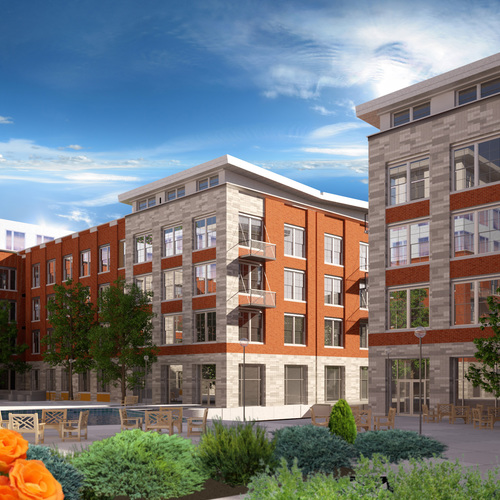
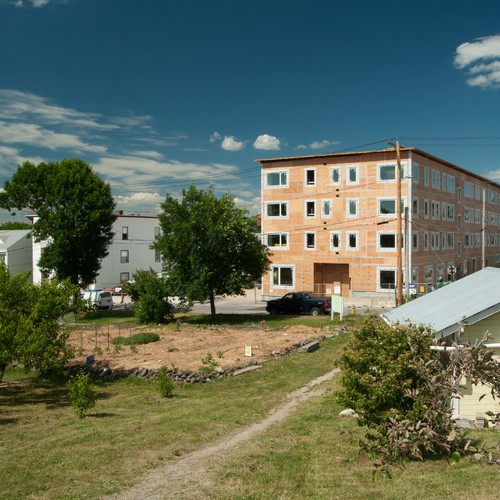
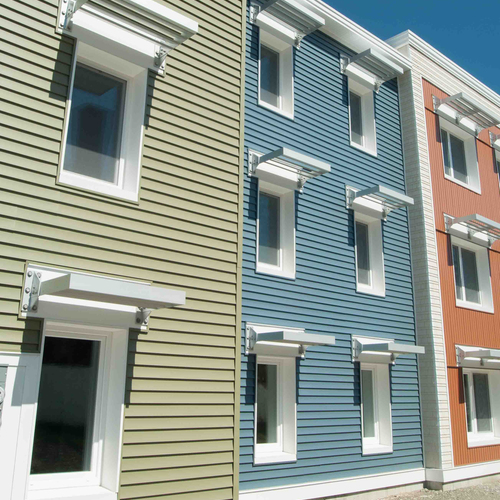
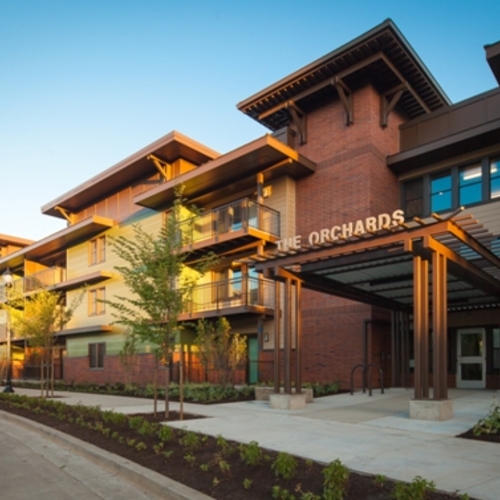






0 Comments
Log in or create an account to post a comment.
Sign up Log in